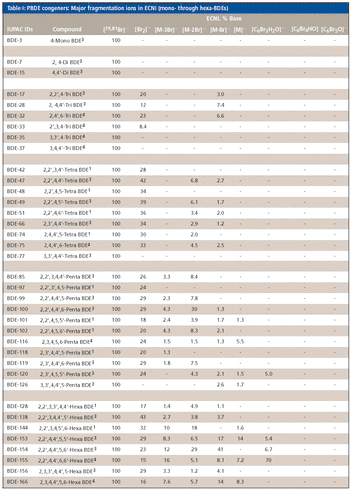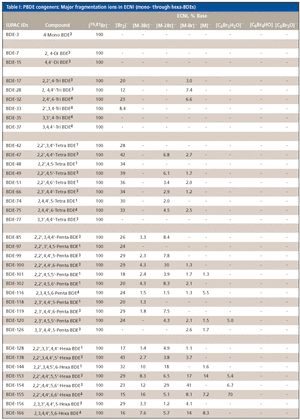
Detrimental health effects of a group of brominated flame retardants, polybrominated diphenyl ethers (PBDEs), have been recognized recently, but only after their wide usage and consequently, global dispersal. Of the possible 209 PBDE congeners, 39 (varying in degree of bromination from mono to deca) have been identified previously in the three common technical mixtures. Additional congeners, presumably debromination products of the fully brominated decabromodiphenyl ether (BDE-209), also have been reported in biotic and abiotic environments. However, costly analytical standards are needed to confirm their identification. In addition, the most widely used identification approach, electron ionization (EI) mass spectrometry (MS), primarily produces spectra indicating only homologue grouping (for example, hepta-BDE). Without specific compound identification, full assessment of toxicological consequences of PBDE burdens is impeded. It has been reported previously that electron-capture negative ionization (ECNI),..

